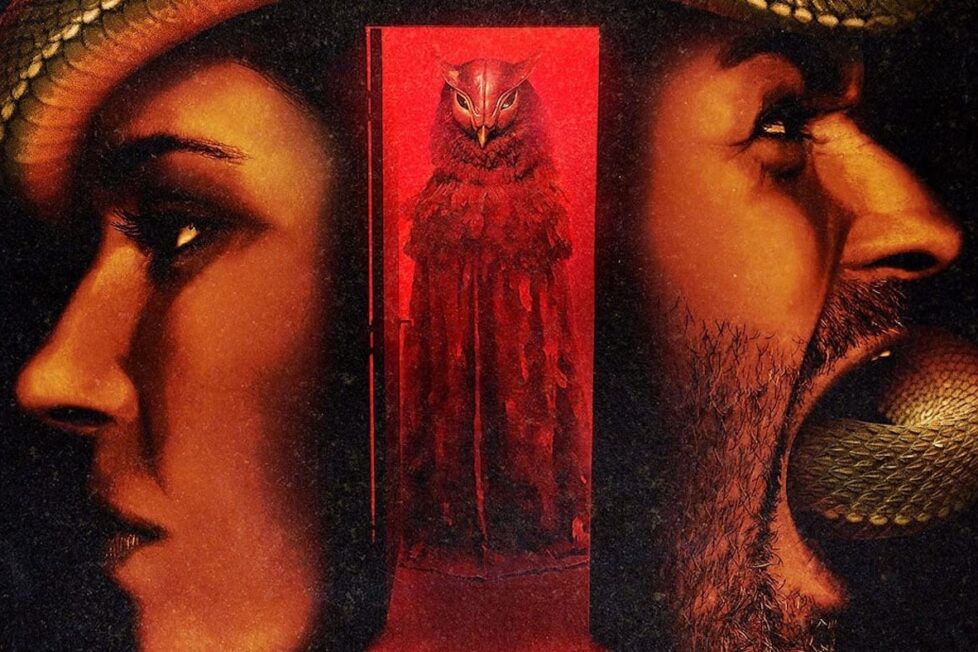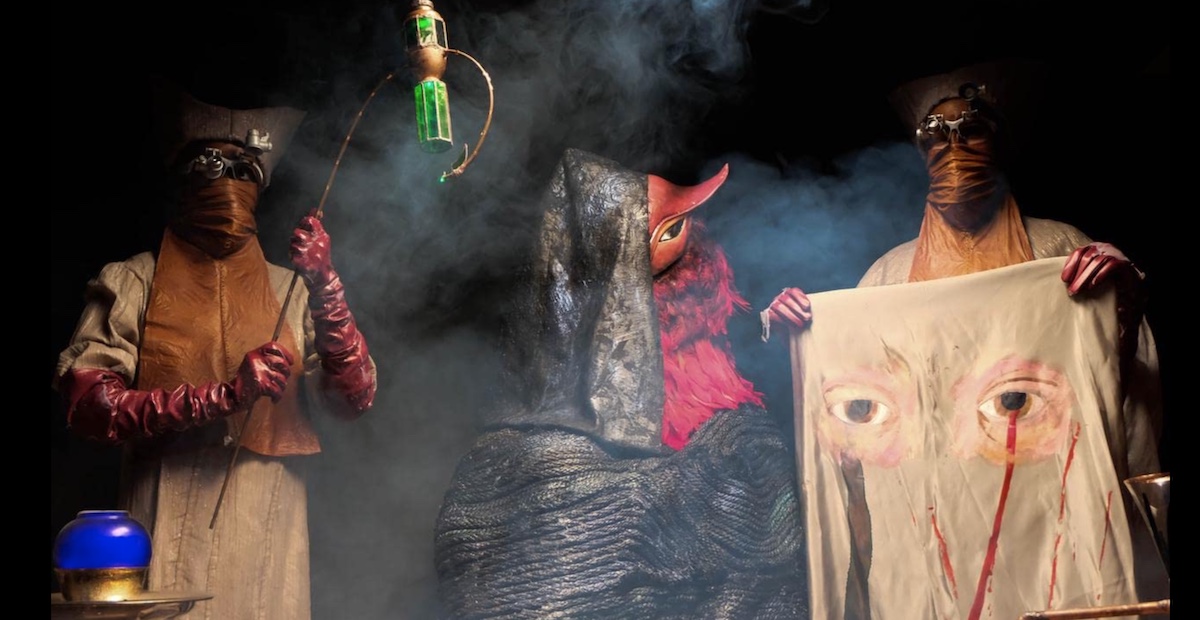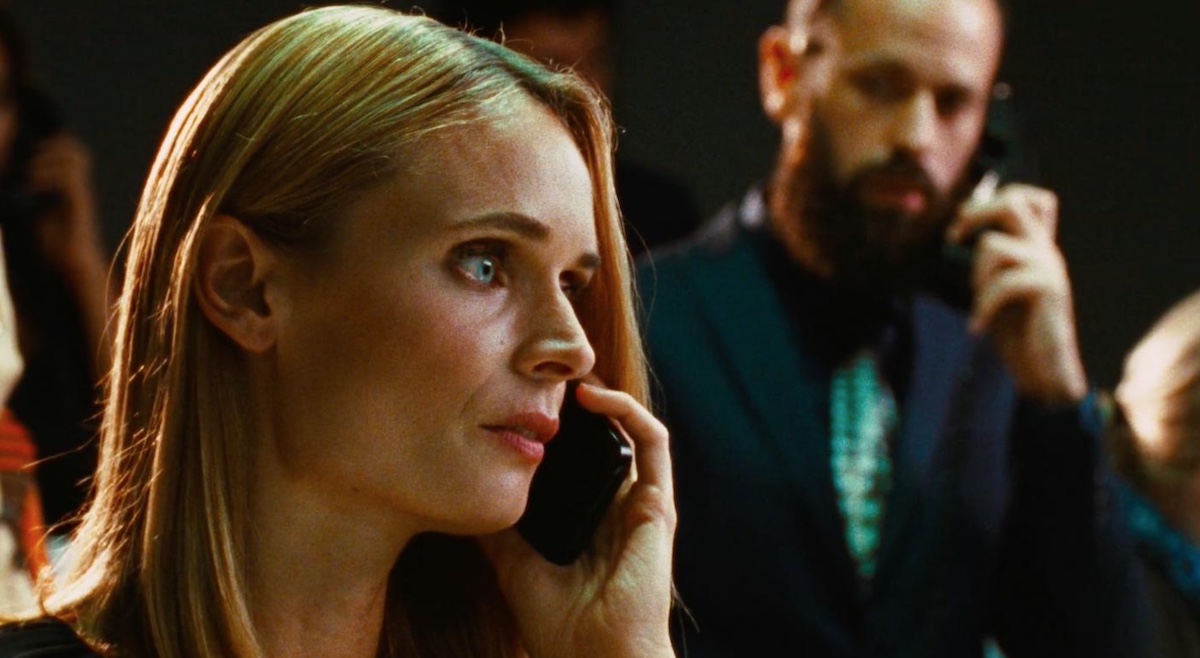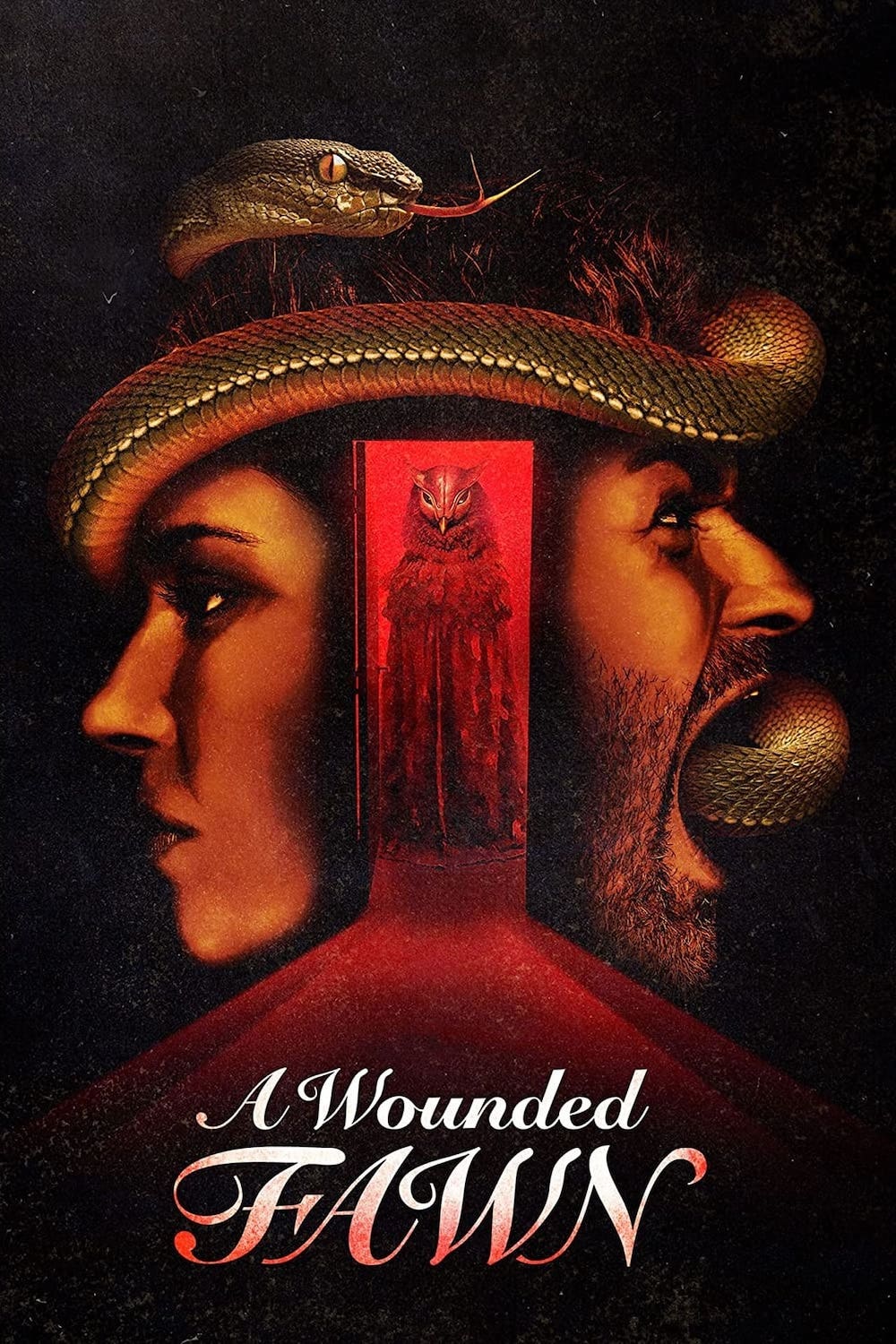A WOUNDED FAWN (2022)
A local museum curator dipping her toe back into the dating pool is targeted by a charming serial killer.

A local museum curator dipping her toe back into the dating pool is targeted by a charming serial killer.


Like his second feature, vampire farce Jakob’s Wife (2021), Travis Stevens’s A Wounded Fawn is more interesting when its secrets and destination are unrevealed. But even if it drags out its climactic man-vs-supernatural confrontation, the first part is a highly effective study in threat, and certainly one of the best-looking indie horror films in ages—gorgeously shot by Ksusha Genenfeld, with skilful editing by Stevens and Zach Clark heightening the impact of its imagery.
Indeed, editing and pacing are on display from the first moments of A Wounded Fawn, with a fast-moving prologue set in an auction room. An ancient Greek bronze sculpture of the Erinyes, or Furies, is up for bidding. “Everything is sold… on an as-is basis”, notes the auctioneer, providing just a hint that the item in question might not be quite what the buyer expects.
Kate (Malin Barr) wins the lot and is at home when Bruce (Josh Ruben) turns up at the door and offers to double the price she paid. His trembling hand’s a further indication something isn’t quite right, as is a glowing red doorway behind Kate, and then the sudden unnoticed appearance of a bird-like figure outside her door. And in a film where the original score mostly takes a back seat to well-chosen songs, her choice of background music (“Nothing’s Going to Hurt You, Baby” from Cigarettes After Sex) confirms something most certainly is going to hurt someone.

We soon cut to a different woman, Meredith (Jakob’s Wife’s Sarah Lind), first with her with her therapist and then with her friends at a gallery (art is often in the frame in A Wounded Fawn), revealing she plans to go away for the weekend with a man she’s only just met. He turns out to be Bruce, and there’s slight tension already evident between them as he drives her to his cabin. Outside, amidst the woods, she thinks she hears a word spoken in the darkness, and a figure seems to move past her; while inside, the Greek bronze (only inches high) is on display, and in the bedroom a painting depicts another bird-man.
The bronze’s full name is The Wrath of the Erinyes; Bruce claims it’s only a reproduction, but museum-worker Meredith suspects otherwise. This only adds to the growing unease—at first Bruce had seemed the perfect host, and she’d come to his cabin hoping for seduction, but his hands are trembling again… when he calls to ask her if everything’s alright it’s probably no coincidence he’s drying a sharp kitchen knife. Over dinner she becomes more and more nervous, believing (or imagining?) there’s something outside, and he becomes more and more aggressive in response.
To this point A Wounded Fawn is a compelling exercise in ratcheting up a non-specific threat. The presence of the supernatural is unmistakable but faint, and the question mark over Bruce’s real agenda is huge. There are a few jump scares (including one which isn’t scary at all, because we can see Bruce approaching Meredith from behind and touch her ear), but the predominant mood is unspecified, nagging fear rather than out-and-out terror. And the audience has identified with the two women (both convincingly played, and never over-acted, by Lind and Barr), much more than the man.
Around halfway into the movie, however, the tone and the narrative take a new turn, as Bruce becomes the film’s main focus, and the strange sounds and unseen things in the forest around the cabin become more and more explicit.
The photography is more adventurous here, too. Earlier, in the more naturalistic part of the film, Stevens and Genenfeld rarely move the camera during a shot, instead relying largely on nice compositions (often symmetrical, with the characters in the centre of the frame) and a generous use of extreme close-ups (not only of faces). By contrast, the visuals of second half are much more fluid—perhaps reflecting Bruce’s increasing uncertainty—and VFX (earlier used sparingly) are more to the fore, although always done without excess. One sequence edited so rapidly that the images are almost subliminal is especially impactful.

Unfortunately, it’s also here that the narrative begins to feel loose. The concept of supernatural revenge on a serial killer may not be new, but it’s not a bad one either. “Why are you here?” asks Bruce. “Vengeance? You want to wring remorse from my body like a wet rag?” However, the two different worlds—mundanely grim murder, and Greek mythology come alive—don’t sit comfortably together.
Although the final confrontation between Bruce and his nemesis does deliver some well-scripted surprises (and fine acting from Ruben), there’s a distinct feeling that after A Wounded Fawn has unveiled its secrets, it’s not quite sure where to go and resorts to filling out a 90-minute runtime with prolonged supernatural menace that can only end in one place.
This is a common issue with indie horror: a powerful one-hour (or shorter) concept being stretched further than it can sustain. And doubtless it comes partly from a perceived need to satisfy the requirements of genre audiences for a certain amount of explicitness. In a very different way Jakob’s Wife had a similar problem.
Still, for all that it’s a bit of a disappointment after A Wounded Fawn’s impressive first half, the concluding fright-fest is well done and Stevens is more restrained than some directors would be. The incredible never sinks into absurdity. A Wounded Fawn might have been even better as a straightforward psychological horror-thriller without the intervention of the Furies, but as it stands it’s still one of the slickest, best-crafted, and at times genuinely engrossing recent movies of its kind.
USA • CANADA | 2022 | 91 MINUTES | COLOUR | ENGLISH


director: Travis Stevens.
writers: Nathan Faudree & Travis Stevens.
starring: Sarah Lind, Josh Ruben & Malin Barr.
